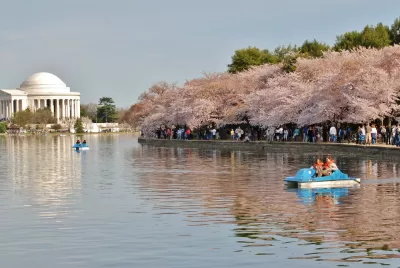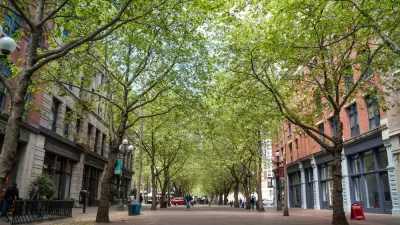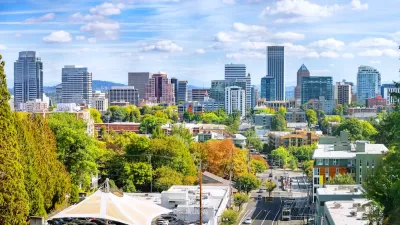Growth and development are the biggest obstacles to Washington, D.C.'s plans to add more than 10,000 trees every year over the next 25 years.

John D. Harden details the ongoing effort to replant the District of Columbia with trees—an effort frustrated recently by the District's recent rate of development and economic growth.
"As part of a concentrated, six-month effort that began in October, crews planted more than 8,500 trees in an attempt to shroud 40 percent of the city under tree canopy by 2032," writes Harden. "But midway through a years-long tree campaign, the same economic successes that ushered in new residents and transformed neighborhoods across Washington are threatening to stymie the city’s woodland progress."
The District has added about 100,000 trees in the past decade, according to the article, but is running out of space to plant more, even as the District prepares a comprehensive plan update that calls for both new development and new trees.
"Andrew Trueblood, director of the D.C. Office of Planning, acknowledged the contradiction, saying the document serves as a framework for city leaders," reports Harden. "The challenge will be determining how to prioritize its recommendations."
The article includes more context, with testimonies from experts and city officials on the challenges, and the benefits, of the effort to replant trees in the District.
FULL STORY: D.C. planted nearly 80 trees a day to reach a canopy target. It’s running out of space.

Maui's Vacation Rental Debate Turns Ugly
Verbal attacks, misinformation campaigns and fistfights plague a high-stakes debate to convert thousands of vacation rentals into long-term housing.

Planetizen Federal Action Tracker
A weekly monitor of how Trump’s orders and actions are impacting planners and planning in America.

In Urban Planning, AI Prompting Could be the New Design Thinking
Creativity has long been key to great urban design. What if we see AI as our new creative partner?

How Trump's HUD Budget Proposal Would Harm Homelessness Response
Experts say the change to the HUD budget would make it more difficult to identify people who are homeless and connect them with services, and to prevent homelessness.

The Vast Potential of the Right-of-Way
One writer argues that the space between two building faces is the most important element of the built environment.

Florida Seniors Face Rising Homelessness Risk
High housing costs are pushing more seniors, many of them on a fixed income, into homelessness.
Urban Design for Planners 1: Software Tools
This six-course series explores essential urban design concepts using open source software and equips planners with the tools they need to participate fully in the urban design process.
Planning for Universal Design
Learn the tools for implementing Universal Design in planning regulations.
Gallatin County Department of Planning & Community Development
Heyer Gruel & Associates PA
JM Goldson LLC
City of Camden Redevelopment Agency
City of Astoria
Transportation Research & Education Center (TREC) at Portland State University
Jefferson Parish Government
Camden Redevelopment Agency
City of Claremont





























